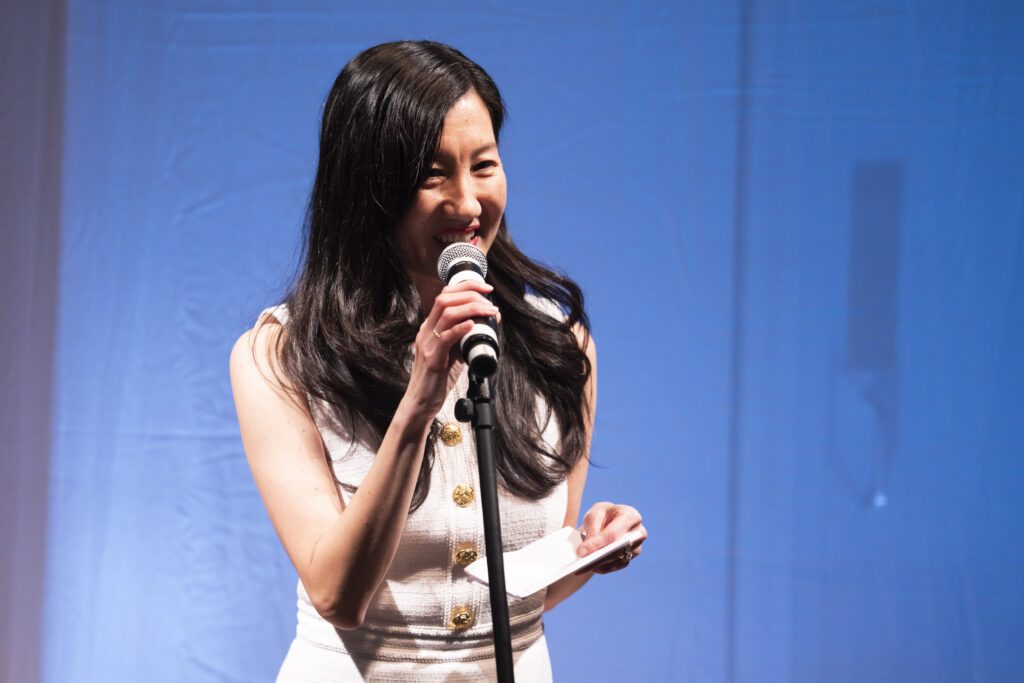Arts leaders agree: In terms of the enterprise of dance, issues are onerous proper now. Actually onerous. Ticket gross sales are down. Particular person giving is down. Grants are a shifting goal. And all of it’s the purview of govt administrators, who’re feeling the stress.

“The job is actually robust, and it’s a must to adore it,” says Garen Scribner, a former skilled dancer and the founding father of the humanities administration and consulting firm Pilot MGMT. “Most businesspeople would let you know this doesn’t make sense.”
Right this moment’s dance organizations want govt administrators who’re out-of-the-box thinkers, with an understanding of inventive imaginative and prescient in addition to nice enterprise sense. “You want a unicorn,” says Scribner, who has a grasp’s diploma from Harvard College’s Kennedy Faculty of Authorities. “You want somebody who has the talents to handle a number of personalities—with an curiosity in fundraising and a capability to do it efficiently.”
Fixed Change
Unicorns are, unsurprisingly, onerous to seek out. In dance, that’s led to a form of govt director musical chairs, with some profitable executives rotating by means of a number of organizations. At Boston Ballet, Ming Min Hui just lately changed Meredith “Max” Hodges, who had beforehand labored for Gallim Dance and is now at New York Metropolis’s The Shed. Barry Hughson moved from Nationwide Ballet of Canada to American Ballet Theatre this yr.
Elsewhere, the panorama has seemed extra like a revolving door, with govt administrators departing dance firms after comparatively quick tenures—maybe unsurprising, given the challenges of the job. Within the final 4 years, for instance, at the least eight Chicago dance organizations have changed their govt leaders.
Two of the brand new leaders are Makeda Crayton and Erica Lynette Edwards. After profitable efficiency careers, each are govt administrators for the primary time, with Deeply Rooted Dance Theater and Giordano Dance Chicago, respectively. And each are managing capital campaigns geared toward constructing dance facilities on reverse ends of their dwelling metropolis.
As Edwards rounds the bend on her first full yr in her function, she’s targeted on incremental change. “I name it my yr of discovery,” says Edwards, who labored as a nonprofit advisor previous to becoming a member of the 60-year-old jazz-dance firm. “I’m in an attention-grabbing place, as a result of artistically the corporate is flourishing. Administratively, we’re all new.”
When Crayton arrived at Deeply Rooted, first as its operations director, she equally discovered an organization on the prime of its inventive sport, however with inadequate administrative buildings in place to help the form of progress it wanted. So she’s concurrently planning, beta-testing, and implementing new enterprise processes—all whereas operating a $20 million capital marketing campaign.
The work is each essential and exhausting. “It’s going nicely,” Crayton says, “nevertheless it comes at a value.”

The Subsequent Technology of Management

Michael Kaiser, chairman of the DeVos Institute of Arts Administration on the College of Maryland, says the pandemic accelerated a 20-year pattern: the humanities’ overreliance on an ageing viewers and donor pool, as youthful generations’ giving habits are extra targeted on funding organizations concerned with the atmosphere, politics, and social points. By his estimation, generational turnover is partly responsible for the present musical chairs in govt management.
“I’m a part of a era of arts leaders who dominated the sphere administratively for fairly a while,” Kaiser says. “Many people have gotten to or are previous retirement age, and we didn’t essentially practice up that subsequent era of leaders all that nicely.”
The brand new crop of govt administrators remains to be coping with pandemic-related monetary shortfalls. Sonja Kostich, who danced at American Ballet Theatre and in Mikhail Baryshnikov’s White Oak Dance Venture, shepherded Kaatsbaan Cultural Park in upstate New York by means of COVID-19 shutdowns. She selected to view that big problem as a possibility for innovation.
“ ‘Suppose in a different way’ was on everyone’s minds,” says Kostich, who went to enterprise faculty following her profession onstage and briefly labored for Goldman Sachs.
Kostich is now president and govt director of Baryshnikov Arts Middle—a full-circle second, after dancing for Baryshnikov at each ABT and White Oak. She sees it as mission-based work. “For arts nonprofits, what’s very difficult is you’ve got numerous ardour, however you don’t have the assets to construct as a lot infrastructure that helps that keenness,” she says.

An Inflection Level
Rachel S. Moore, previously govt director of American Ballet Theatre and now president and CEO of The Music Middle in Los Angeles, says one exceptional ache level in the present day is the stress between philanthropy and fairness. “It’s turn into clear that among the main foundations have determined that they are going to not be supporting giant establishments—for the time being ladies and folks of coloration are beginning to run them,” she says.
One other stress is the value of admission. Nonprofit dance firms have understandably swung the pendulum towards affordability and accessibility, preserving ticket costs steady or decreasing shopper prices as inflation impacts People’ pocketbooks. However Scribner says that may unintentionally undervalue the artwork, impacting each attendance and the underside line.
“Folks don’t suppose it’s beneficial, since you haven’t valued it,” he says.
The Hazard of the Standing Quo
Most of the challenges dance’s govt administrators face are removed from new. Within the Nineties and 2000s, Kaiser earned a status for bringing financially struggling dance organizations again from the brink. “All of them had one factor in widespread,” he says. “By the point I obtained to them, they’d very small help bases left.”
Kaiser says the knee-jerk response is usually to tug again on inventive initiatives and advertising when an organization is beneath stress. “These are the very two issues that truly create pleasure and curiosity—and subsequently assist generate income,” he says. “When a company will get in somewhat little bit of bother, they have a tendency to make it worse by getting rather less attention-grabbing and rather less seen.”
Cussed Optimism
The steadiness between monetary viability and inventive excellence is an ever-moving goal. To hit it, govt administrators will must be each brave and considerate.
“It’s not good lunches or stunning letters,” Kaiser says. “What builds a donor base is actually thrilling artwork, actually robust institutional advertising, and a capability to make individuals really feel a part of your group.”
Moore believes the humanities’ nonprofit fashions are salvageable—if leaders act shortly and with ample help.
“It’s evolution, not revolution,” she says. “We have to evolve. The query is: Are we going to have the ability to evolve quick sufficient to outlive?”

